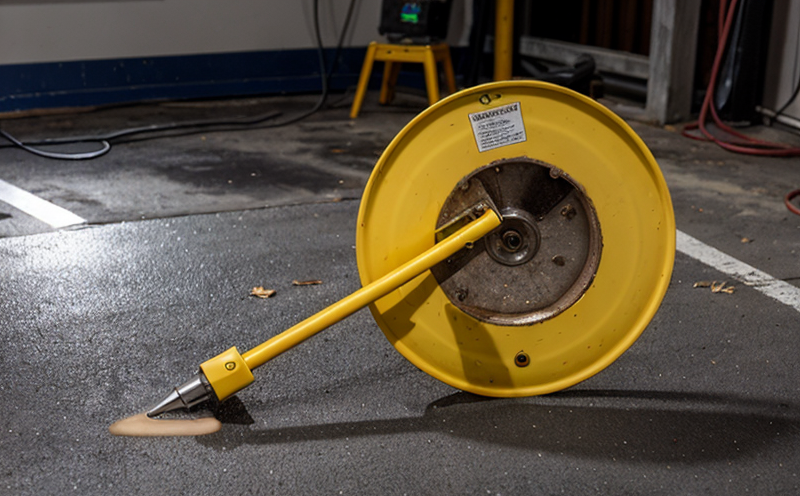ASTM E1441 Computed Tomography for Industrial Applications
The ASTM E1441 standard is a cornerstone in the field of computed tomography (CT) for industrial applications. This non-destructive evaluation method provides detailed cross-sectional images of objects without causing any physical damage, making it invaluable for inspecting complex geometries and internal structures.
ASTM E1441 CT scanning is widely used across various sectors including aerospace, automotive, manufacturing, and medical industries. Its ability to detect flaws such as porosity, cracks, and other imperfections within materials and components makes it an essential tool for quality assurance and compliance with international standards.
The process involves exposing the object to X-rays from multiple angles around a complete 360-degree arc. These rays are captured by detectors which then generate cross-sectional images that can be reconstructed into three-dimensional models using specialized software. The resulting data allows engineers and technicians to visualize internal structures with unprecedented clarity.
One of the key advantages of ASTM E1441 CT is its non-destructive nature, ensuring that valuable components remain intact for further use or analysis after inspection. This capability significantly reduces costs associated with waste generation during testing phases while maintaining high standards of safety and reliability.
For industries reliant on precision manufacturing processes, ASTM E1441 CT offers unparalleled insight into the integrity of parts used in critical applications such as aircraft engines, turbine blades, and prosthetics. By leveraging this technology early in product development cycles, manufacturers can identify potential issues before costly mistakes occur.
Moreover, compliance with international standards like ASTM E1441 ensures that products meet stringent quality requirements set by regulatory bodies worldwide. This not only enhances marketability but also fosters trust among consumers who demand safe and reliable goods.
Applied Standards
- American Society for Testing and Materials (ASTM) E1441-18: Standard Practice for Computed Tomography Examination of Non-Metallic Materials Using X-Rays.
- International Organization for Standardization (ISO) 5725-1: Accuracy (Trueness and Precision) in Measurement.
The ASTM E1441 standard provides specific guidelines on how to perform computed tomography examinations using X-rays, ensuring consistency across different laboratories. Compliance with these standards is crucial for maintaining accuracy and precision during inspections conducted according to this methodology.
Scope and Methodology
| Aspect | Description |
|---|---|
| Sample Preparation | Ensure samples are clean, dry, and free from any external contamination that could interfere with the imaging process. |
| Imaging Parameters | Select appropriate voltage, current, and exposure time based on material properties to optimize image quality. |
| Data Acquisition | Capture multiple projections of the sample from various angles around a complete 360-degree rotation. |
| Image Reconstruction | Use specialized software to convert raw projection data into detailed cross-sectional images. |
The scope of ASTM E1441 CT testing includes evaluating the internal structure and composition of non-metallic materials. This can involve identifying defects, assessing material homogeneity, or verifying part geometry against design specifications.
Why Choose This Test
- Absence of physical damage to inspected components.
- Precision in detecting internal defects and flaws.
- Ability to produce detailed three-dimensional models for comprehensive analysis.
The ability to inspect complex geometries non-destructively makes ASTM E1441 CT a preferred choice for industries where quality assurance is paramount. It allows manufacturers to catch potential issues early in the production cycle, thereby reducing costly rework and downtime.





